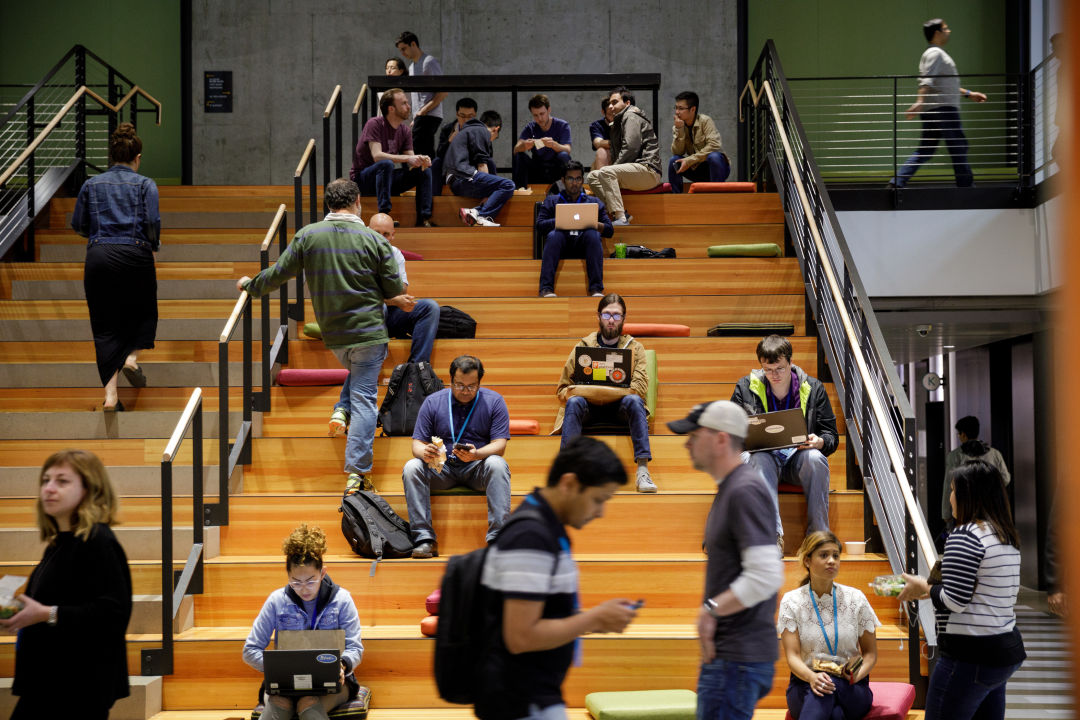Where Does Amazon's New Remote Work Policy Leave Seattle?

Image: Seattle Met composite
One way to mark the passing of pandemic seasons has been to note the inevitable bump-backs of Amazon and Microsoft’s return-to-office dates.
When our two big-tech behemoths announced they were sending their corporate employees home in March of 2020, it put every office employer on notice to do the same. Remote work was only supposed to last a few weeks initially. But as coronavirus case counts lingered, Amazon, for instance, said work from home would last until October of 2020. Then January of 2021. Then June. As vaccines rolled out, the company felt confident enough to reveal that an “office-centric culture” would await them in the fall. Blowback ensued. So it tweaked the policy: By September, the new expectation would be three days a week in office, two remote. Just kidding. The company would shoot for January of 2022 instead.
Now the e-commerce giant has finally given up on assigning a date to more normalcy. On Monday, Jassy wrote that the baseline of three days per week in-office was gone. “We expect that there will be teams that continue working mostly remotely, others that will work some combination of remotely and in the office, and still others that will decide customers are best served having the team work mostly in the office,” Jassy said. Some teams, theoretically, could always work from home.
It's a shift that, coupled with Jassy’s recent remarks about moving jobs to Bellevue, could be interpreted as a harbinger of a South Lake Union uproot. Small businesses in the neighborhood have suffered without Amazon employees’ daily presence. This week’s news didn’t help. “How can we survive?” one told GeekWire.
But the change in policy isn’t a death knell for the neighborhood. An indefinite plan is not a permanent one, and Jassy’s words are plenty couched. Jeff Bezos’s successor doesn’t mention a fully remote setup in his note, only hybrid in-person and out-of-office arrangements. He also wants workers to be able to attend in-person meetings with a day's notice.
The update, then, is more keeping up with the Joneses than revolutionary. Microsoft has also postponed its office return indefinitely. “What Amazon is doing is pretty much consistent with what everybody else in the industry is doing,” says Vladimir Dashkeev, an assistant professor of economics at Seattle University.
Dashkeev adds that security-sensitive positions mean that some corporate employees will have to visit HQ. For that reason alone, “there won't be a complete move outside corporate offices.” Still, pre-pandemic levels of office occupancy are unlikely, he says. Some will undoubtedly keep Zooming away as deemed appropriate.
Critically, the burden of those decisions will fall on director-level employees overseeing different groups. They have until January 3 to make their final calls. “It's classic Amazon,” says Mikaela Kiner, the CEO and founder of human resources consulting firm Reverb. “Just that decentralization that they love so much, and that their model is really built around.”
Kiner says ingraining some human resources tools for making those tough choices will be vital. Seeking input from team members will be critical too—unilateral decisions on remote work tend to not go over well. Coordinating across teams can help ensure that any communication gains from returning to the office are actually realized. Microsoft found that collaboration was more siloed during the first six months of 2020 as more people went virtual.

There won't be much foot traffic at Amazon anytime soon.
Image: Courtesy Amazon
Like in March of 2020, Amazon and Microsoft’s recent remote work policies set the tone for other employers, Kiner says. “It’s definitely safe for smaller companies to kind of wait and watch and see what those folks are up to.” At the same time, companies with lower headcounts have a better sense of their individual workers’ preferences. Broadly, Kiner’s observed that workers advocate for hybrid setups—some days in the office, some days out. “People are really leaning toward a lot of flexibility,” she says.
It’s still too early to tell how many will tilt that way at Amazon, and what its policy will mean for office life across Seattle. Downtown Seattle Association president and CEO Jon Scholes remains optimistic. “We still believe that over time many employers and employees will gravitate to an office-centric work environment that allows for flexibility,” he wrote in a statement.
At least some data supports that belief. In the third quarter of 2021, more sublease space came off the market than in the prior year total, per a Colliers International report. “There’s definitely a lot of momentum irrespective of what these kind of remote work policies turn into,” says Nicholas Carlsen, one of the report’s authors. He points to shipping startup Convoy’s acquisition of more than 120,000 square feet downtown as a sign of that renewed energy.
One reason for this interest might come as a surprise: Commercial space in the city is inexpensive, at least compared to the likes of San Francisco, New York, and Los Angeles. “We're still going to be a much cheaper option than those guys, and we have a very strong talent base,” says Carlsen.
Much of that brainpower resides in South Lake Union, where big-tech firms mingle with the city’s flourishing life sciences scene. It's an area that rose in a hurry. Still, without much clarity on Amazon's long-term plans, the city’s left to ponder how quickly it could dissipate.




